Entertaining Comics, more commonly known as EC Comics, was an American publisher of comic books, which specialized in horror fiction, crime fiction, satire, military fiction, dark fantasy, and science fiction from the 1940s through the mid-1950s, notably the Tales from the Crypt series. Initially, EC was owned by Maxwell Gaines and specialized in educational and child-oriented stories. After Max Gaines' death in a boating accident in 1947, his son William Gaines took over the company and began to print more mature stories, delving into the genres of horror, war, fantasy, science-fiction, adventure, and others. Noted for their high quality and shock endings, these stories were also unique in their socially conscious, progressive themes that anticipated the Civil Rights Movement and the dawn of the 1960s counterculture. In 1954–55, censorship pressures prompted it to concentrate on the humor magazine Mad, leading to the company's greatest and most enduring success. Consequently, by 1956, the company ceased publishing all of its comic lines except Mad.

Gemstone Publishing is an American company that publishes comic book price guides. The company was formed by Diamond Comic Distributors President and Chief Executive Officer Steve Geppi in 1994 when he bought Overstreet.
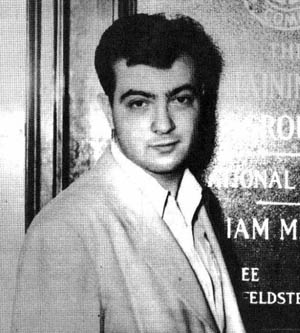
Joseph Orlando was an Italian-American illustrator, writer, editor and cartoonist during a lengthy career spanning six decades. He was the associate publisher of Mad and the vice president of DC Comics, where he edited numerous titles and ran DC's Special Projects department.
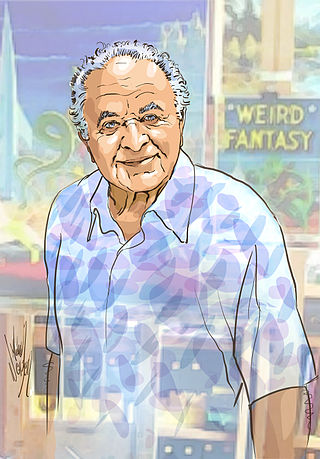
Albert Bernard Feldstein was an American writer, editor, and artist, best known for his work at EC Comics and, from 1956 to 1985, as the editor of the satirical magazine Mad. After retiring from Mad, Feldstein concentrated on American paintings of Western wildlife.

The Vault of Horror is an American bi-monthly horror comic anthology series that was published by EC Comics from 1950 to 1955 created by Bill Gaines and Al Feldstein. The magazine began in March 1948 as War Against Crime. It continued under this title for 11 issues before becoming The Vault of Horror with issue #12. The comic ran for 29 issues until being discontinued after issue #40.

Two-Fisted Tales is an anthology war comic published bi-monthly by EC Comics in the early 1950s. The title originated in 1950 when Harvey Kurtzman suggested to William Gaines that they publish an adventure comic. Kurtzman became the editor of Two-Fisted Tales, and with the dawn of the Korean War, he soon narrowed the focus to war stories. The title was a companion comic to Frontline Combat, and stories Kurtzman wrote for both books often displayed an anti-war attitude. It returned to adventure-themed stories in issues #36 through #39, co-edited by John Severin and Colin Dawkins, with a cover-title change to The New Two-Fisted Tales.

Crime SuspenStories was a bi-monthly anthology crime comic published by EC Comics in the early 1950s. The title first arrived on newsstands with its October/November 1950 issue and ceased publication with its February/March 1955 issue, producing a total of 27 issues. Years after its demise, the title was reprinted in its entirety, and four stories were adapted for television in the HBO's Tales From The Crypt.
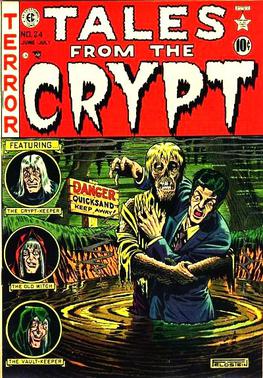
Tales from the Crypt is an American bi-monthly horror comic anthology series that was published by EC Comics from 1950 to 1955 created by Bill Gaines and Al Feldstein. The magazine began in March 1947 as International Comics. It continued under this title for five issues before becoming International Crime Patrol (#6) and Crime Patrol (#7–16). It was retitled The Crypt of Terror with issue #17. Two more issues were published under this title before it was rebranded as Tales from the Crypt for issue #20. The comic bore this title for 27 issues until being discontinued after issue #46.
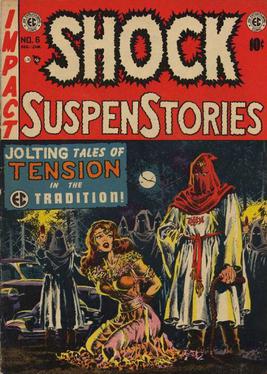
Shock SuspenStories was part of the EC Comics line in the early 1950s. The bi-monthly comic, published by Bill Gaines and edited by Al Feldstein, began with issue 1 in February/March 1952. Over a four-year span, it ran for 18 issues, ending with the December/January 1955 issue.
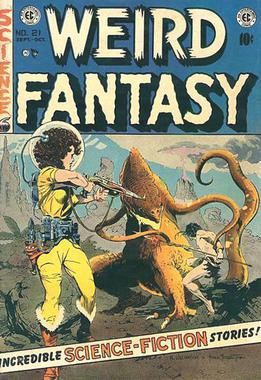
Weird Fantasy is an American dark fantasy and science fiction anthology comic that was part of the EC Comics line in the early 1950s. The companion comic for Weird Fantasy was Weird Science. Over a four-year span, Weird Fantasy ran for 22 issues, ending with the November–December 1953 issue.

Weird Science was an American science fiction comic book magazine that was part of the EC Comics line in the early 1950s. Over a four-year span, the comic ran for 22 issues, ending with the November–December, 1953 issue. Weird Fantasy was a sister title published during the same time frame.
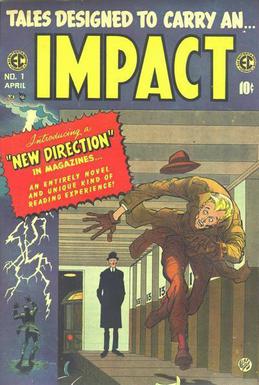
Impact was a short-lived comic book series published by EC Comics in 1955 as the first title in its New Direction line.

Incredible Science Fiction was an American science fiction anthology comic published by EC Comics in 1955 and 1956, lasting a total of four issues.

Shock Illustrated was an American black and white magazine published by EC Comics from late 1955 to early 1956. Part of EC's Picto-Fiction line, each magazine featured three to five stories. The artists drew one to four panels per page with the text overlaid onto the artwork. The first issue appeared with a cover date of September–October 1955 and featured three psychology-themed stories, similar in theme to the comic Psychoanalysis published by EC in 1955. Starting with the second issue this type of story was generally reduced to one per issue, with the remaining stories being similar in theme to those that appeared in EC's comic Shock SuspenStories.

Confessions Illustrated was a black-and-white magazine published by EC Comics in early 1956. Part of EC's Picto-Fiction line, each magazine featured three to five stories. The format alternated blocks of text with several illustrations per page.

Terror Illustrated was a black-and-white magazine published by EC Comics in late 1955 and early 1956. Part of EC's Picto-Fiction line, each magazine featured three to five stories. The format alternated blocks of text with several illustrations per page.
Russ Cochran was a publisher of EC Comics reprints, Disney comics, and books on Hopalong Cassidy, Chet Atkins, Les Paul, and vacuum tubes. He was a publisher for over 30 years, after quitting his job as a physics professor.

Jack Oleck was an American novelist and comic book writer particularly known for his work in the horror genre.

American cartoonist Harvey Kurtzman was the founding editor and primary writer for the humor periodical Mad from its founding in 1952 until its 28th issue in 1956. Featuring pop-culture parodies and social satire, what began as a color comic book became a black-and-white magazine with its 24th issue.

















